Whether you want to admit it or not, there are some foods that, no matter what, go right to your gut and cause what feels like nearly instant weight gain. Yes, we’re talking about dreaded belly fat.
There’s a reason why we all hate belly fat—we all know how hard it is to get rid of once it shows up.
This type of weight gain is referred to as “deep fat tissue,” and it can even lead to some more serious issues, such as heart disease, diabetes, and Alzheimer’s.
Where your body ends up storing excess calories as fat depends on your hormones, and some unhealthy foods trigger just the exact right hormonal reaction. You could say that they hit you in the gut—literally.
So which foods are some of the “insta-belly” culprits? Here is a breakdown of the foods and drinks that are the biggest offenders of giving you lasting belly fat. Read on, and for more on how to be your healthiest, check out these 15 Underrated Weight Loss Tips That Actually Work.
If you’re thinking not all bread is bad, you’re right. It’s highly-refined, white bread that should be avoided when you’re working to lose belly fat. Studies have shown that eating whole grains can actually lower visceral fat deposits in your belly, but eating refined grains leads to more. Looking for more helpful tips? Sign up for our newsletter to get daily recipes and food news in your inbox!
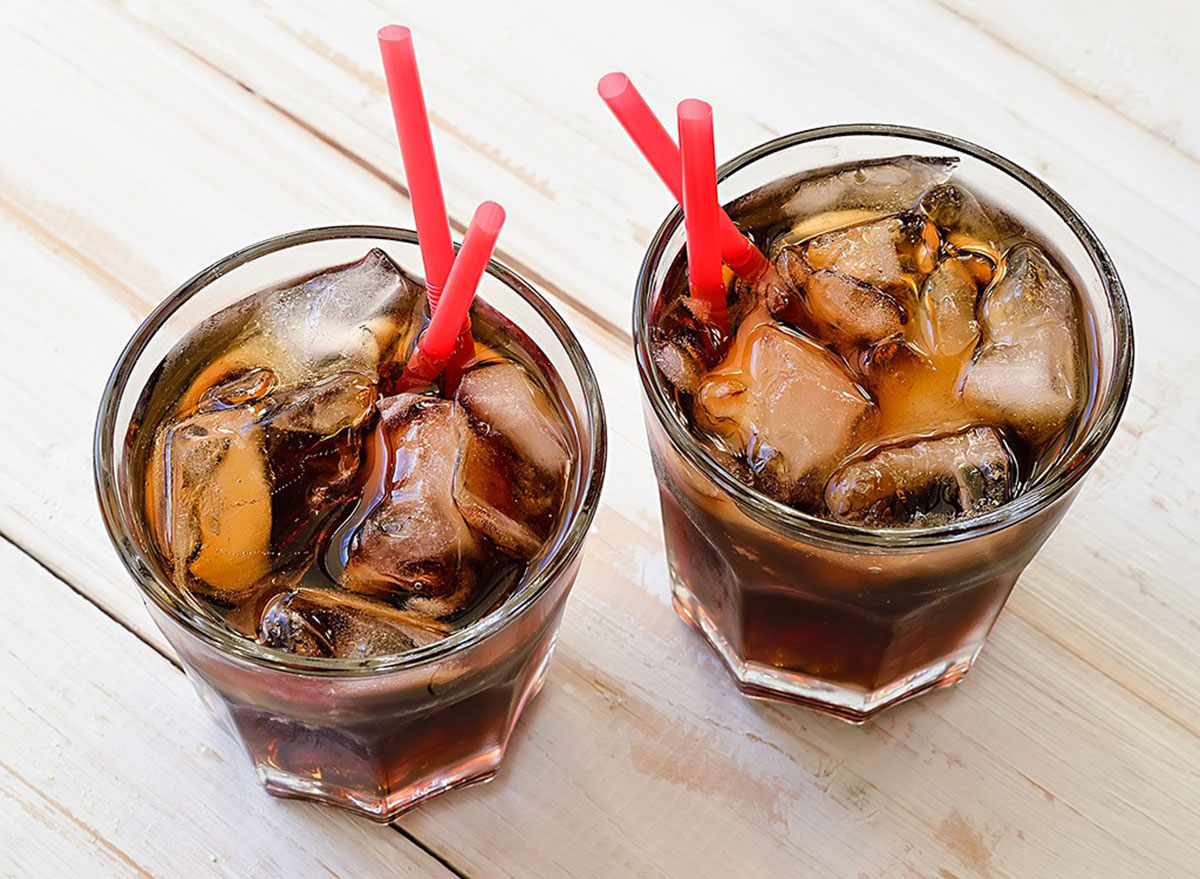
If you want to get your beach body back, you should cut out sugary beverages and replace them with diet versions, right? Sorry, but that’s just wrong. Many studies have found an association between the consumption of diet sodas and wider waist circumference. What’s more, diet soda drinkers have a higher percentage of belly flab than those who don’t sip the beverage, a study in the Journal of the American Geriatrics Society found. Why? Researchers think diet soda drinkers may overestimate how many calories they’re “saving,” and then overeat.
Instead, sip on some white tea. This brew blocks the formation of new fat cells and helps the body break down stored fat, according to a Nutrition & Metabolism study. That means that even when you overindulge, it’s harder for your body to store the excess calories in your body.

It’s natural, it’s packed with Vitamin C—what could be wrong? Well, while 100% fruit juice is a better pick than sugary drinks like Sunny D, even the all-natural stuff still packs up to 36 grams of sugar per cup—about the same amount of sugar you would get if you ate four Krispy Kreme glazed donuts. What’s more, most of the sweetness in juice comes from fructose, a type of sugar associated with the development of visceral adipose tissue—yep, that’s belly fat.
Instead, your best bet is to stick with plain ol’ H2O. But there is a way to add some flavor to those cups of water. You can add fresh sliced fruit like oranges and grapefruit. The key, though, is to keep the peels on: citrus peels are rich in the antioxidant d-limonene, a powerful compound that helps flush out toxins from the body and allows it to release stored visceral fat.
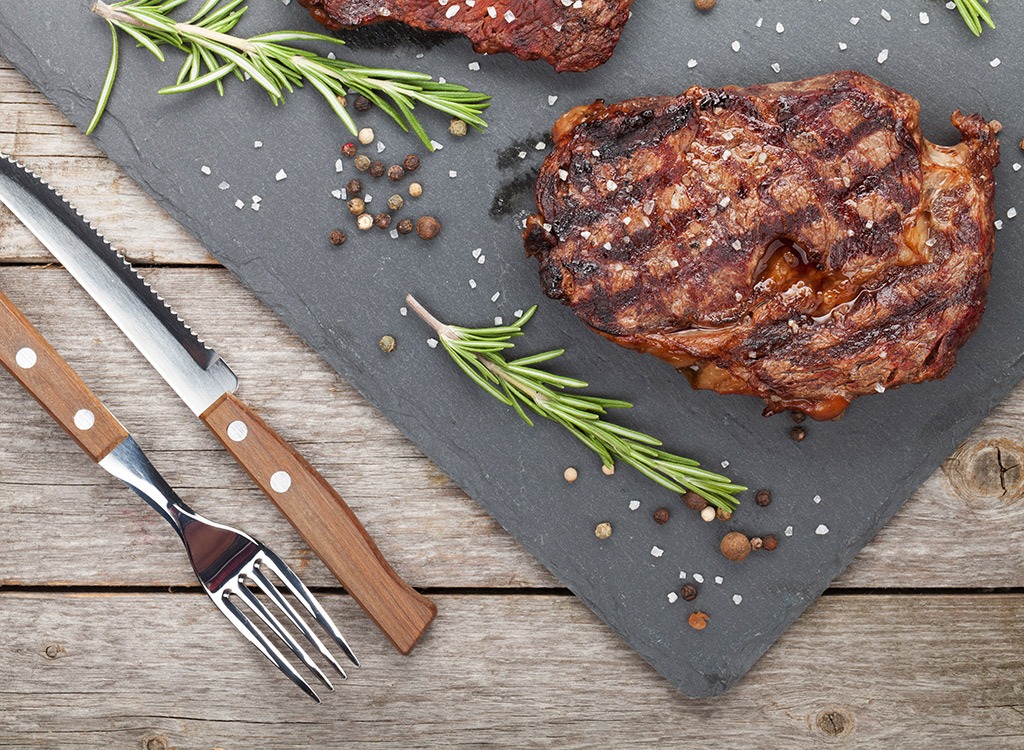
Wait—don’t toss your steak knife at us just yet! Studies show that eating the right cuts of steak can actually help whittle your middle. But rib-eye, along with T-bone and New York Strip, is one of the three fattiest cuts. Researchers of one study found that consuming a diet rich in fatty, fresh red meat is positively associated with abdominal obesity and larger waist circumference.

Let’s start by making it clear that not all chocolate is bad. In fact, dark chocolate is swimming in health benefits, and according to a study published in Heart, eating up to 3.5 ounces of chocolate a day can help lower your risk of heart disease. Plus, it can help reduce belly fat! But it’s milk chocolate that is the problem. Milk chocolate bars are loaded up with sugar and are typically packing a ton of calories. An American Journal of Clinical Nutrition study found that the food that was associated with the most weight gain was chocolate bars. Just be sure to stay away from those milk chocolate bars!

Again, when it comes to canned soups you’re going to want to want to make sure you’re choosing the right ones. See, there are plenty of soup options that sneak in a ton of sodium, which not only causes belly bloat but actually can increase your appetite and hinder your ability to know when you’re full.
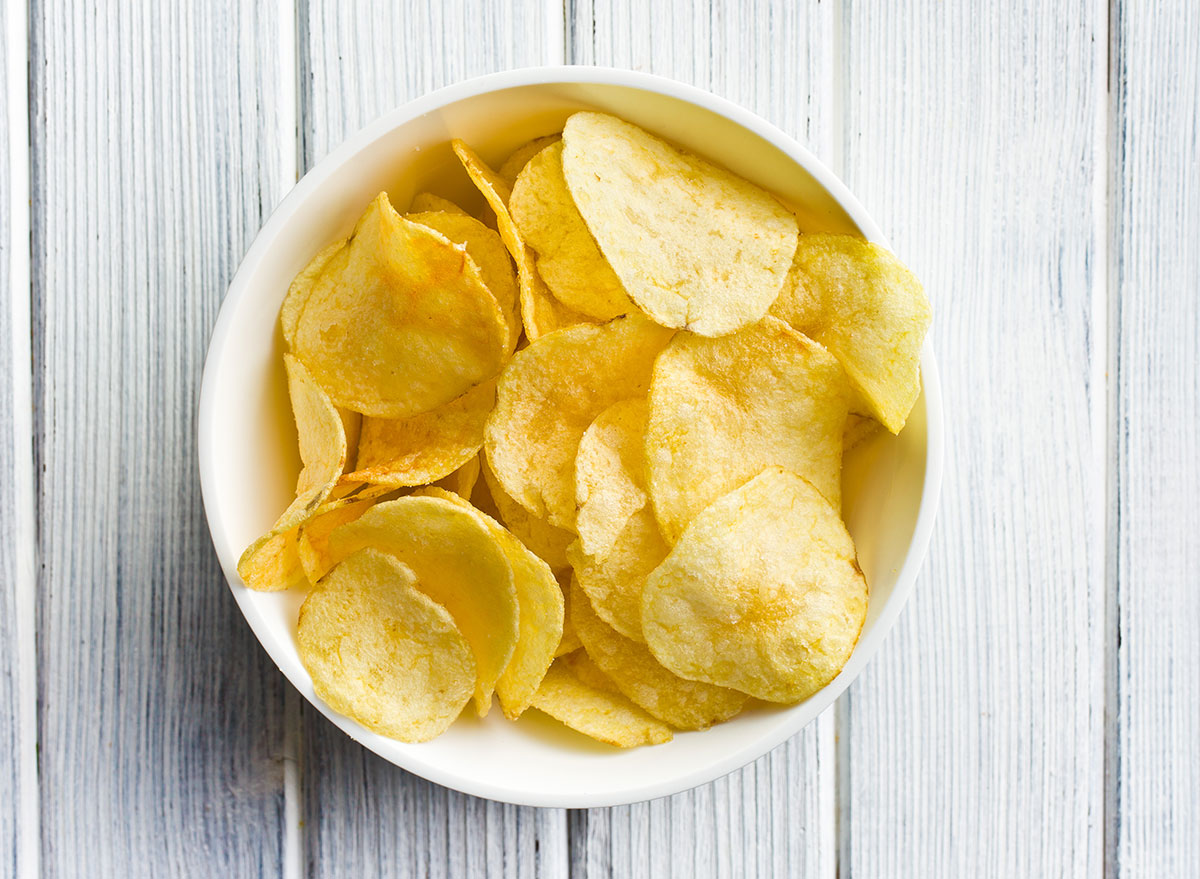
In the contest to find the very worst possible food for your belly, Harvard researchers believe they have a winner. It’s not just that potato chips are saturated with saturated fat, causing abdominal fat gain. It’s not just that they’re crusted with salt, causing mid-level bloat. It’s not even a pure calorie play—there are plenty of more caloric snacks out there. What makes potato chips so epically bad for your belly is not what they have, but what they lack: the ability to make you feel satisfied. A handful of chips can turn into a big empty bag in no time.
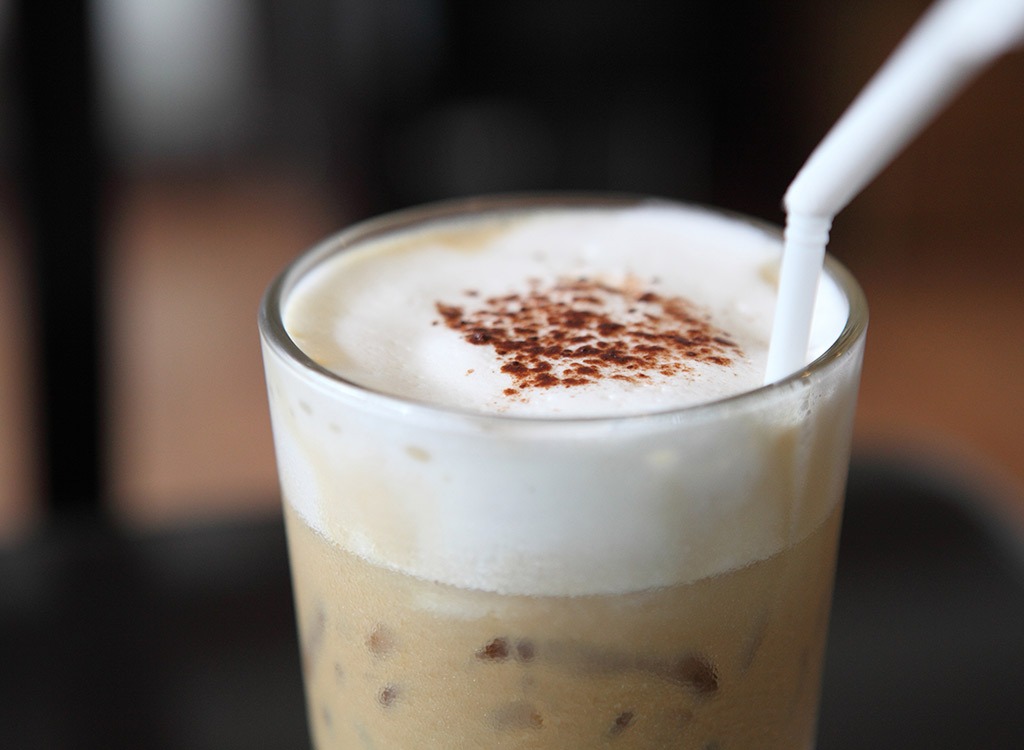
Coffee by itself isn’t bad for your waistline, but if you’re frequently sipping on frozen coffee drinks, then you’ve just met your problem. Most of the time, these high-calorie drinks are packed with sugar and dairy. Plus, a 2017 study published in Public Health found that nearly 70% of coffee drinkers had their cup of Joe with caloric add-ins including sugar and creamers.
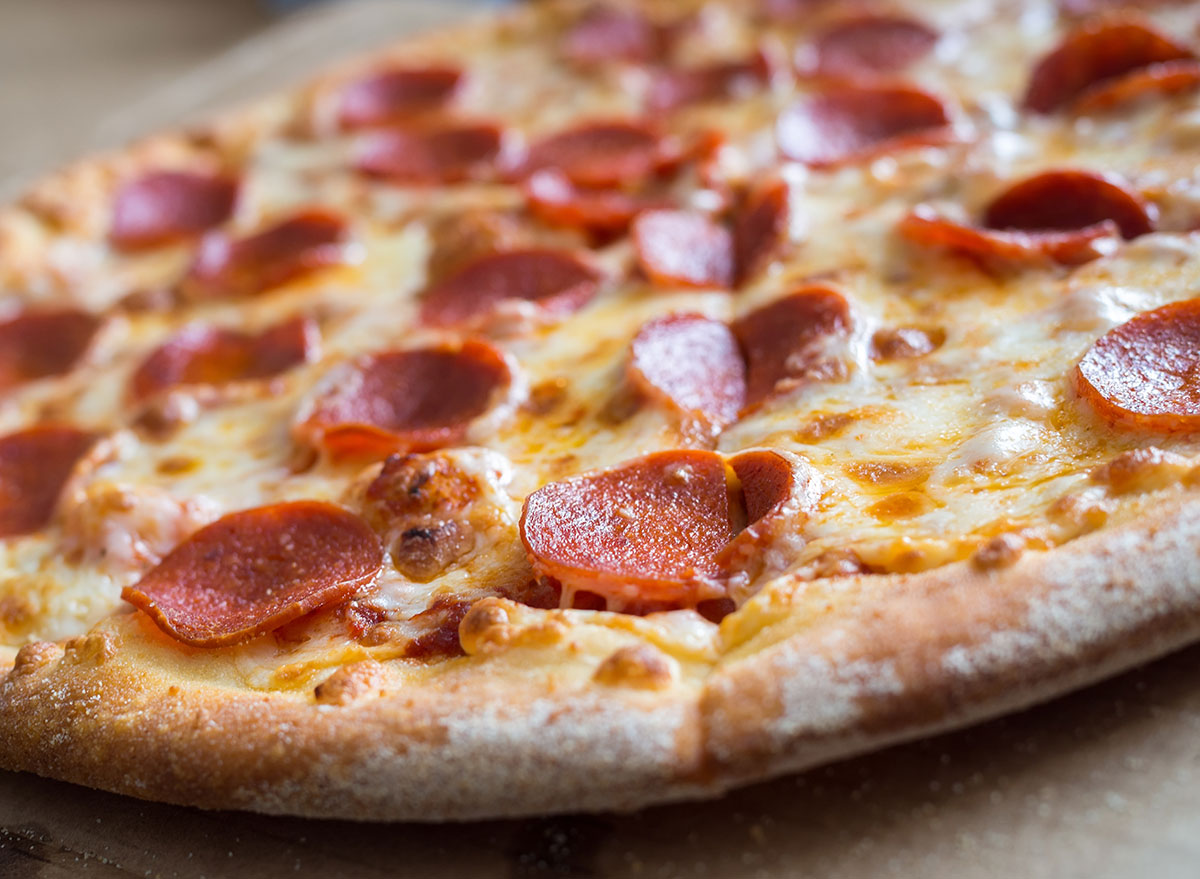
Even if there some veggies sprinkled on top, it’s important to keep in mind that pizza is still in fact, well, pizza. It’s the second biggest contributor of saturated fat to the American diet (just below cheese itself), and most slices serve up half a day’s worth of the artery clogger. Researchers have found that unlike other fats, the saturated variety is the most likely to be stored in the stomach. You’ll really want to avoid any of the unhealthiest pizzas in America, that’s for sure.

Some people see the label “low fat” and think it’s the healthier option. But don’t let the tricky terminology fool you. These muffins and treats are typically loaded up with processed flour, tend to be high in sugar, and can be high in sodium, too. These are all components that add up to packing on the belly fat. No thanks!
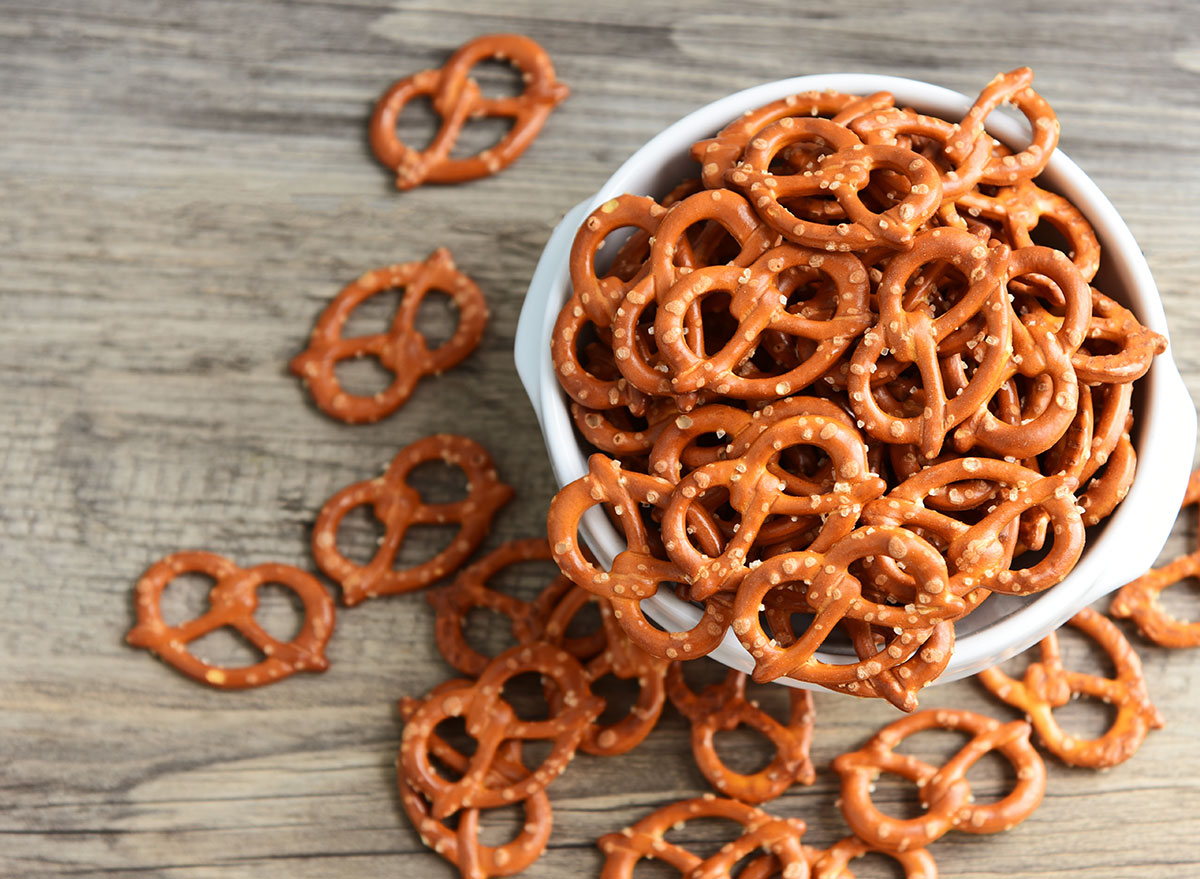
Pretzels seem like they’re a better option than potato chips, and we already know chips are a no-go. Sorry to disappoint, but pretzels are just as bad, as they are loaded up with salt. One study published in the Journal of Nutrition even uncovered how salt confuses the biological processes that tell you when you’re full. Essentially, you just end up eating more, which leads to weight gain, and it’ll go straight to your belly.

Not all cereal is bad, but the sugary, colorful kind you most likely ate a kid? That’s the stuff that will lead to the excess belly fat. Plenty of cereals are high in sugar, yet low in fiber and protein, so soon enough, you’ll feel hungry again. Plus, eating a healthy breakfast every day can help you lose weight quicker. One study found that 78% of participants who lose 30 pounds or more kept the weight off by eating breakfast daily. As long as you’re eating the right kind of breakfast!

Any fat-laden bad carb-fest will make you gain weight, but there’s something almost magical about the effects of fried spuds on your body’s fat-storage system. And by magical, we don’t mean in a good way. See, one longitudinal Harvard study found that people who ate fries regularly gained more than three pounds of body weight every four years; over the course of the study, the french fry eaters gained 13 pounds of belly flab from fries alone!
So what can you have instead? Homemade sweet potato fries that are baked, not fried. A simple swap that will keep that belly fat away.

This one is sad to see, but loading up on ice cream every night isn’t going to help you shed that weight—it’s going to cause you to pack more on. And why is that? Well, because of all that sugar you consume, ice cream is a carb-heavy food, and if you happen to eat a lot of refined carbohydrates, this can result in belly fat deposition, Edwina Clark, RD, APD, explained to us in another article. So perhaps it’s best not to eat a pint every night . . .

